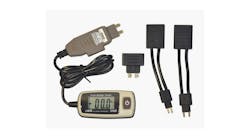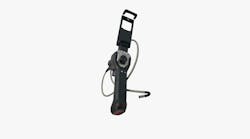In 2014, major automotive manufacturer and aftermarket repair organizations came together to sign a 50-state memorandum of understanding that would give independent repairers access to the same OEM repair data, tools, and software available to franchised auto dealers.
Modeled on the Massachusetts Right to Repair bill that was overwhelmingly passed by voters in 2012, the agreement extended the Massachusetts requirements for light vehicles to all major OEMs nationwide.
Notably absent from that agreement were heavy duty vehicle manufacturers. That changed in September, when the Commercial Vehicle Solutions Network (CVSN) and Truck and Engine Manufacturers Association (EMA) joined the Equipment and Tool Institute (ETI), the Auto Care Association (AutoCare) and Heavy Duty Aftermarket Canada (HDAC) in signing a very similar MOU that will extend access to heavy duty vehicle service information for model year 2010 and later trucks and buses over 10,000 lbs. in the U.S. and Canada.
“The MOU establishes a workable approach to providing independent service providers with access to information they need to repair heavy-duty vehicles properly and safely,” said Jed Mandel, EMA president. “The MOU was developed to address concerns expressed by independent service providers that they have better and more-timely access to OEM-controlled information. The MOU helps ensure that access, thereby eliminating any need for state, provincial, or federal regulation.”
CVSN began work on the MOU almost immediately after the light vehicle agreement was inked. The EMA had opposed the inclusion of heavy duty vehicles in Massachusetts because the original bill called for interface technology not commonly available on commercial trucks. There are also some major component manufacturers that are not part of the major industry associations, which could complicate data access.
"The HD engine manufacturers are entirely different entity, and had very different concerns than the light vehicle manufacturers," says Aaron Lowe, senior vice president of regulatory and government affairs at AutoCare. "We've been negotiating for about a year and a half."
Now, repairers will be able to use third-party aftermarket tools to obtain diagnostic information, which will provide more service options for fleet owners and other operators.
“With today’s complex, computer-controlled heavy-duty vehicles, having access to the correct information and latest diagnostic tools is essential to being able to complete repairs for our customers," said Marc Karon, chairman of the CVSN's Commercial Right to Repair Coalition. "The MOU addresses our need for reasonable access to OEM service information and diagnostic tools. I am pleased that we were able to finalize a practical and workable solution through the MOU process.”
Under the terms of the MOU, the participating industry associations will work together to monitor the exchange of service information and address any information access issues "with the goal of helping to ensure that vehicles are properly and safely maintained with the correct parts and tools," according to a statement from the associations.
Like the light vehicle agreement, the MOU effectively puts an end to state-by-state legislative efforts related to commercial vehicle repair information access.
There are few key differences between the HD and light duty agreements. The heavy duty MOU includes additional standard interface technology because those types of vehicles use different systems. Engine configurations are also more complex in the heavy duty industry, making some repair information very difficult to document and obtain. "We wanted to make sure that repairers could get information on how those engines are configured so an aftermarket company can make sure they have the right parts for any repairs that need to be done," Lowe says.
As with the previous MOU, the National Automotive Service Task Force (NASTF) will act as a go-between and develop a way to help make that information available. AutoCare, CVSN, and HDAC will monitor access and field complaints. That process has worked well in the light vehicle manufacturers so far, Lowe says. "We get together monthly to talk about any concerns," Lowe says. "The same thing will happen in the heavy duty market. If there is any sort of major issue, then we have to develop a dispute resolution panel. On the light duty side, when there have been issues there has been a good dialogue about resolving them, and we've seen good progress."
The light duty MOU calls for all vehicles to have a standardized interface for diagnostic computers starting in model year 2018.
The only major stumbling block remaining on the heavy duty side is that several transmission manufacturers and other suppliers are not members of the EMA. "We have to see how it goes," Lowe says. "That is one of my concerns is that some of those parts and components come from companies that are not association members. If we need to, we'll go back and re-evaluate how to address that if it becomes a problem."

